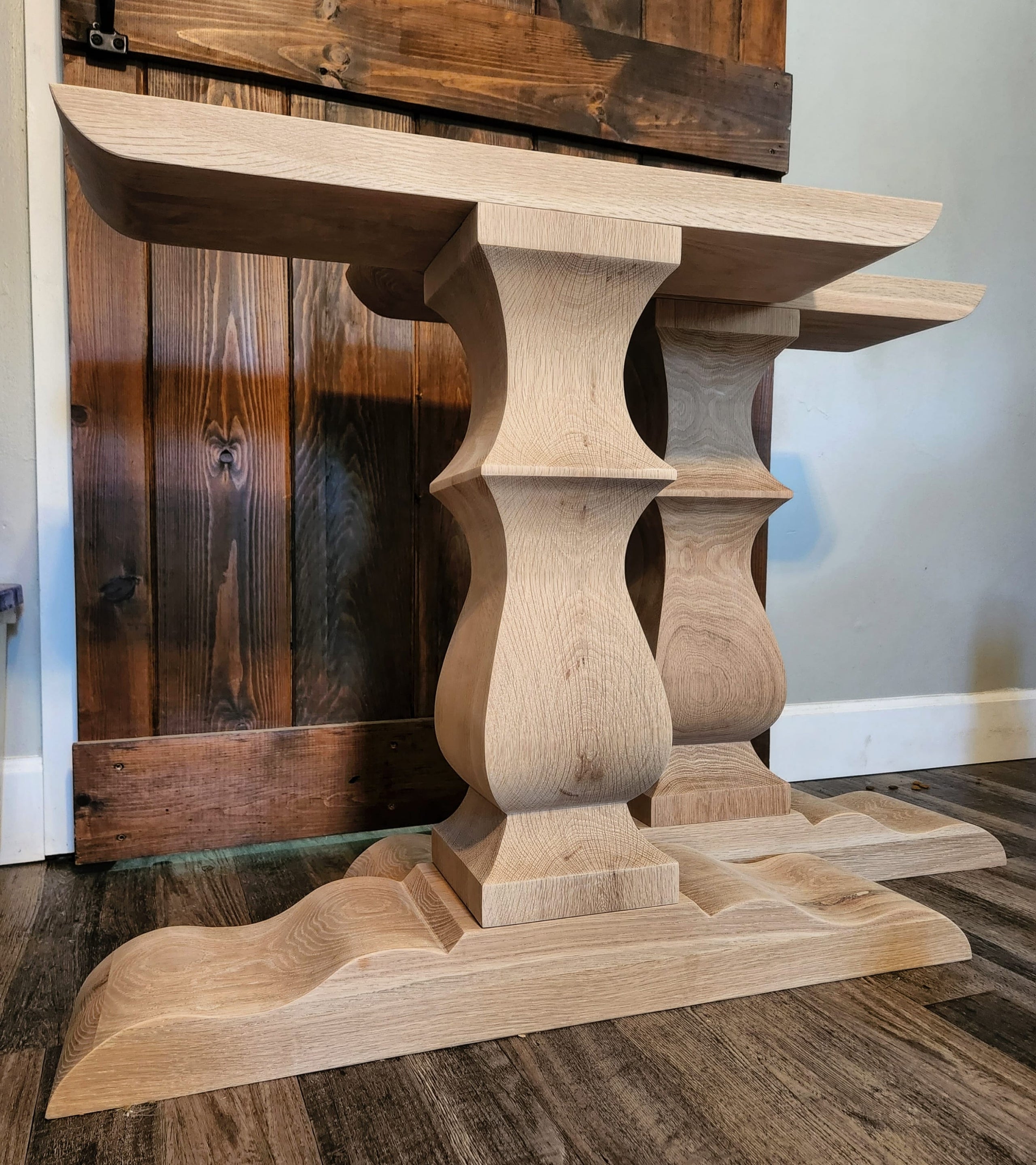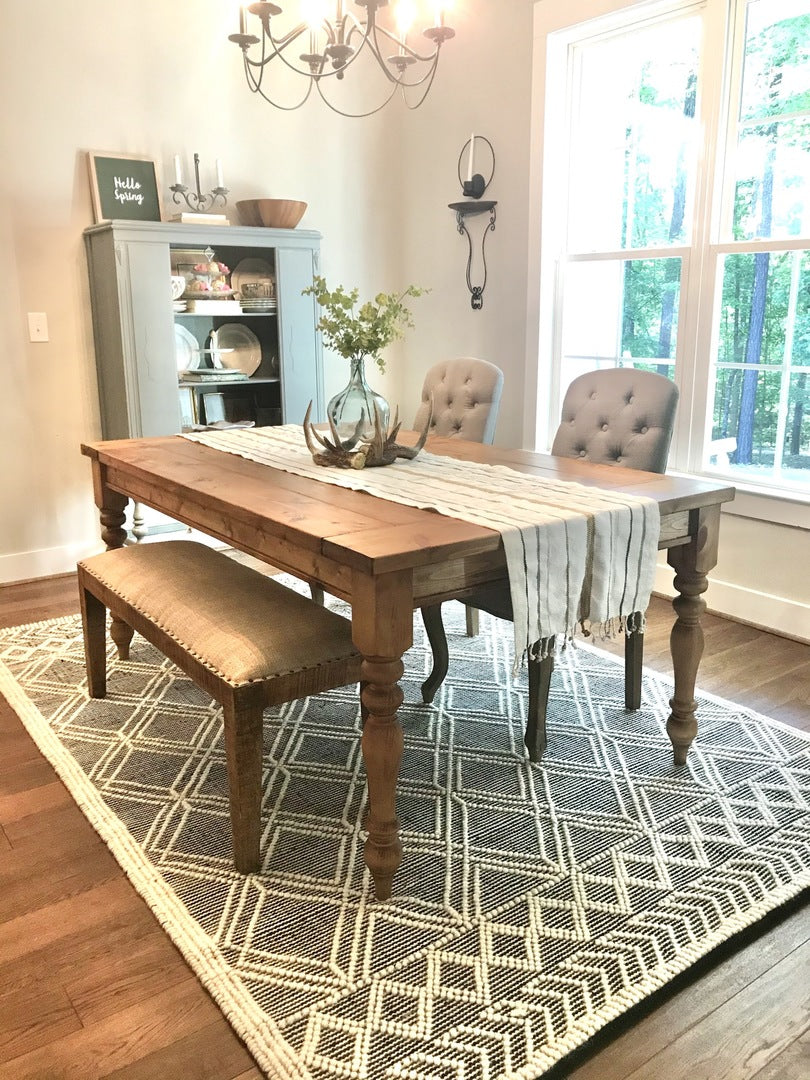Discover the very best Products for Dining Room Table Legs for Every Style
Discover the very best Products for Dining Room Table Legs for Every Style
Blog Article
Picking the Perfect Table: What Styles Work Best for Your Home?
Picking the perfect eating table for your home can be a nuanced procedure that balances looks and functionality. To navigate these options properly and find a table that genuinely enhances your home, consider the complying with elements in information.
Assessing Your Space
Examining the measurements and format of your dining area is a vital initial step in selecting the ideal dining table. Begin by determining the size and size of the area, accounting for doorways, windows, and other building attributes that can affect table positioning. This ensures that your table not only fits but also enables comfortable movement around it.
Think about the number of people you usually amuse. A table must fit your family's everyday requirements while using adequate versatility for occasional guests. Generally of thumb, assign at the very least 24 inches of table width each to make certain a comfy eating experience.
It's likewise necessary to preserve suitable clearance around the table. Ideally, there need to go to the very least 36 inches between the table edge and wall surfaces or other furniture, making it possible for very easy gain access to and motion. For spaces where chairs with arms or added storage space systems like buffets are involved, raising this clearance to 48 inches is advisable.
Lighting and atmosphere play considerable functions. Ensure that your eating table lines up with existing lighting components or prepare for sufficient lights options. This extensive spatial assessment warranties that your table not just fits physically but likewise harmonizes with your area's general capability and aesthetic.
Popular Table Styles

Typical eating tables usually include luxuriant information, rounded legs, and rich wood finishes, stimulating a feeling of classic sophistication. They are best for homes with traditional design or those wanting to add a touch of sophistication to their dining location.
Modern eating tables prioritize simplicity and tidy lines, commonly integrating materials like glass and metal. These tables are ideal for modern areas, offering a sleek and minimalist appearance that matches minimalist layout approaches.
Rustic dining tables, on the various other hand, stress natural products and a handmade appearance - dining room table legs. They often include recovered wood and a troubled finish, developing a cozy and inviting ambience. These tables work well in farmhouse-style homes or those looking for a relaxing, organic feeling
Industrial dining tables incorporate resources such as metal and timber, frequently showcasing a practical aesthetic. This design is appropriate for lofts or metropolitan spaces, including over here a touch of rugged beauty and sturdiness to the dining experience.
Each style offers unique advantages, making it essential to pick one that lines discover this up with your home's general layout and your personal choices.
Material Options
When selecting a dining table, the selection of material plays a critical function in establishing both the table's aesthetic appeals and capability. Timber, metal, glass, and composite products each deal distinct advantages and difficulties, making it crucial to align the material with your home's design and lifestyle demands.
Wood is an ageless and versatile option, readily available in selections such as oak, walnut, and mahogany. Understood for its sturdiness and heat, wood complements both typical and contemporary insides. Nevertheless, it needs regular maintenance to stop scrapes and bending.
Metal tables, frequently crafted from stainless-steel, light weight aluminum, or wrought iron, are applauded for their modern charm and robustness. They are especially matched for industrial or minimal settings however can be susceptible to dents and might really feel chilly to the touch.
Glass table bring an air of beauty and openness, suitable for smaller sized spaces as they create an illusion of even more area. While simple to tidy, glass can be at risk to spots and requires cautious handling to prevent chips and cracks.
Composite products, such as MDF and plywood, offer cost-effective and personalized services, though they might do not have the long life of all-natural materials. Choosing the right material ensures your table is both a functional asset and a visual delight.
Sizes And Shape Considerations
After figuring out the ideal material for your table, the following consideration is picking the appropriate sizes and shape to match your room. The shape of the table significantly affects the space's aesthetic and performance. Rectangular tables, the most common shape, are optimal for larger areas and can fit a greater variety of guests. They also permit a more official eating experience. Conversely, rounded tables cultivate a sense of affection and are exceptional for smaller eating areas, motivating discussion by eliminating edges and making everyone really feel similarly consisted of.
Size is equally critical and should be determined by both the area's measurements and the variety of people you plan to seat on a regular basis. As a regulation of thumb, allocate at least 24 inches of table size each to guarantee comfortable dining. In addition, consider the table's clearance area: there must be at the very least 36 inches in between the table edge and the walls or various other furnishings. This makes certain that diners can move easily without really feeling cramped. Prolonging tables supply versatility if you frequently organize larger celebrations, supplying added seats when required without inhabiting extra room daily. Choosing the appropriate shape and size guarantees both functionality and visual consistency in your dining area.
Matching Your Style
Choosing an eating table that balances with your existing decor is essential in producing a cohesive and inviting space. A smooth, minimalist table with tidy lines is excellent for a contemporary home, while a vintage, ornate table matches an extra traditional setup.
Color and product are just as substantial. If your decoration features cozy tones and all-natural materials, think about a wooden table to boost the organic Home Page feel. On the other hand, a glass or metal table may be much more appropriate in a space dominated by cool colors and industrial components. Take note of the finish, as it needs to mirror other furniture and components to keep harmony.
A rough-hewn, redeemed timber table can include personality to a rustic area, while a polished marble surface area can boost a luxurious eating area. A well-matched dining table not only improves visual allure yet likewise improves the total eating experience.

Verdict
Choosing the excellent eating table demands cautious consideration of space, style, products, shape, and size. Typical tables complement traditional insides with rich wood coatings, while contemporary tables suit modern setups via glass and metal.
Report this page